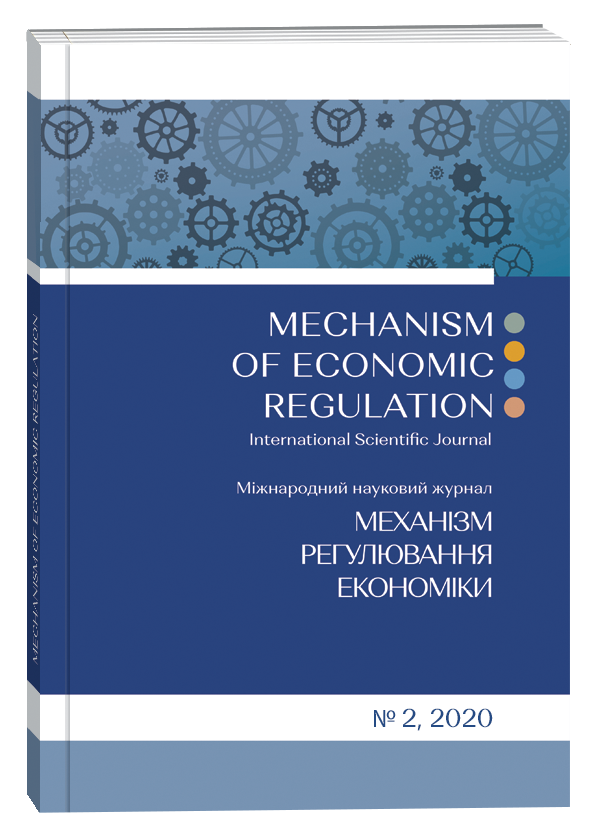НАУКОВЕ ОБҐРУНТУВАННЯ ПІДВИЩЕННЯ ТЕХНІКО-ЕКОНОМІЧНОЇ ЕФЕКТИВНОСТІ ВИКОРИСТАННЯ СОНЯЧНОЇ ЕНЕРГІЇ
Анотація
Стаття присвячена пошуку шляхів підвищення ефективності використання сонячних панелей. У руслі підвищення економічної ефективності експлуатації сонячних станцій розглянуто способи зниження вартості виробництва електроенергії на основі енергії сонця. Метою статті є дослідження шляхів більш ефективного використання сонячної енергії, а також порівняння всіх видів установки фотоелектричних модулів. Основний акцент у дослідженні зроблено на системи стеження за Сонцем, що дає накраще співвідношення ціна/ефективність сонячних станцій. Зокрема, досліджено питання економічної доцільності використання двовісної системи трекінгу сонячних панелей. Розглянуто переваги та недоліки даного підходу. Проаналізовано енергетичні можливості сонячного випромінювання в земних умовах. Побудовано таблицю залежностей кута руху Сонця в часі за одну світлову добу для умов Сумського регіону. Розраховано максимальне значення інтенсивності сонячного випромінювання за рік на 1 м2. Побудований графік середньомісячного виробництва електроенергії. В ході роботи було поставлено експеримент, в рамках якого розраховано чотири варіанти розміщення фотоелектричних модулів: з автоматичним наведенням на Сонце; похилого типу; вертикального типу; із фіксованим кутом. Встановлено, що для міста Сум найбільш ефективною є двовісна система орієнтування. За результатами обробки експериментальних даних в системі з трекером забезпечується вироблення електричної енергії майже на 24 % більше порівняно із стаціонарним варіантом інсталяції (фіксованим кутом) модуля фотоелектричного модуля. Результати проведеного дослідження можуть бути використані енергетичними організаціями і підприємствами, органами влади та іншими зацікавленими сторонами у сфері альтернативної енергетики.
Посилання
Шиняков, Ю. А., Шурыгин Ю. А., Аркатова О. Е. Повышение энергетической эффективности автономных фотоэлектрических энергетических установок // Электроника, измерительная техника, радиотехника и связь. Доклады ТУСУРа. – № 2 (22). – Часть 2. – 2010. – С. 102.
Попель, О. С. К расчету поступления солнечной радиации на земную поверхность / О. С. Попель, С. Е. Фрид, Г. М. Альварес // Гелиотехника. – 1986. – №1. – С.56.
Плеханов, С. И. Оценка возможностей роста производства солнечных элементов на основе CdTe, CIGS и GaAs/Ge в период 2010-2025 гг. [Электронный ресурс] / С. И. Плеханов, А. В. Наумов. – Режим доступа : AEnergy.ru
Наумов, А. В. Развитие солнечной энергетики на основе тонкопленочных CIGS-элементов / А. В. Наумов, С. И. Плеханов // Энергия: экономика, техника, экология. − 2013. − № 7. − С. 14.
Кузнецов, Ф. А. Кремний для солнечной энергетики / Ф. А. Кузнецов, М. Ф. Резниченко // Материалы электронной техники. – 2008. – №4. – С. 4.
Gay, C. F. Performance advantages of two-axis tracking for large flat-plate photovoltaic energy systems / C. F. Gay, J. W. Yerkes, J. H. Wilson // Conf. Rec. IEEE Photovoltaic Spec. Conf 16. − 1982.
Капля, Е. В. Автоматическая система ориентации солнечной батареи в условиях переменной освещенности / Е. В. Капля // Известия ВолгГТУ. – 2009.– №8(56) – С. 88.
UST [Электронный ресурс]. – Режим доступа: http://ust.su/solar/media/section-inner79/3032
NASA Surface meteorology and Solar Energy [Electronic resource]. – Access mode: https://eosweb.larc.nasa.gov/cgi-bin/sse/grid.cgi?uid=3030
Shyniakov, Yu. A., Shuryhyn, Yu. A. & Arkatova, O. E. (2010). Povysheniye energeticheskoy effektivnosti avtonomnykh fotoelektricheskikh energeticheskikh ustanovok [Increasing the energy efficiency of autonomous photoelectric power plants]. Elektronika. Izmeritelnaya Tekhnika. Radiotekhnika i Svyaz. Doklady TUSURa. – Electronics, measurement equipment, radio engineering and communications. Proceedings of TUSUR University, 2 (22), 2, 102. [in Russian].
Popel, O. S., Fryd, S. E. & Alvares, H. M. (1986). K raschetu postupleniya solnechnoy radiatsii na zemnuyu poverkhnost [To the calculation of solar radiation input to the earth's surface]. Geliotechnika, 1, 56. [in Russian].
Plekhanov, S. Y. & Naumov, A. V. Otsenka vozmozhnostey rosta proizvodstva solnechnykh elementov na osnove CdTe. CIGS i GaAs/Ge v period 2010-2025 gg. [Assessment of the possibilities of growth in the production of solar cells based on CdTe, CIGS and GaAs/Ge in the period 2010-2025]. Retrieved from AEnergy.ru [in Russian].
Naumov, A. V. & Plekhanov, S. Y. (2013). Razvitiye solnechnoy energetiki na osnove tonkoplenochnykh CIGS-elementov [Development of solar energy based on thin-film CIGS-elements]. Enerhyia Ekonomyka Tekhnyka Ekolohyia, 7, p. 14. [in Russian].
Kuznetsov F. A. & Reznychenko M. F. (2008). Kremnyi Dlia Solnechnoi Enerhetyky [Silicon for solar energy]. Materyaly Elektronnoi Tekhnyky – Materials of Electronics Engineering, 4, p. 4. [in Russian].
Gay C. F., Yerkes J. W. & Wilson J. H. (1982). Performance advantages of two-axis tracking for large flat-plate photovoltaic energy systems. Conf. Rec. IEEE Photovoltaic Spec. Conf. 16.
Kaplia, E. V. (2009). Avtomaticheskaya sistema oriyentatsii solnechnoy batarei v usloviyakh peremennoy osveshchennosti [Automatic orientation system of the solar battery under variable illumination conditions]. Izvestiya VolgGTU, 8(56), p. 88. [in Russian].
UST. http://ust.su/solar/media/section-inner79/3032.
NASA Surface meteorology and Solar Energy. Retrieved from https://eosweb.larc.nasa.gov/cgi-bin/sse/grid.cgi?uid=3030.


